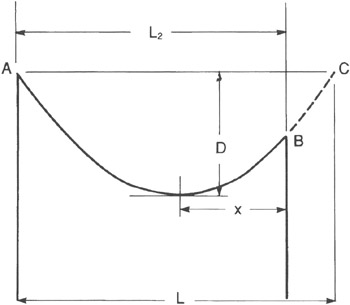The difference in level between points of supports and the lowest point on the conductor is called SAG.

The figure above shows a conductor suspended between two equilevel supports A and C.The conductor is not fully stretched but is allowed to have a dip.
The generally sag is calculated as
Where,
S is the sag
l is the length of the conductor
T is the tension in the conductor
Effect of wind and ice loading: The above
formulae for sag are true only in still air and at
normal temperature when the conductor is acted
by its weight only.However, in actual practice, a
conductor may have ice coating and
simultaneaously subjected to wind pressure.The
weight of ice acts vertically downwards i.e.,in the
same direction as the weight of the
conductor.The force due to the wind is assumed
to act horizontally i.e., at right angles to the
projected surface of the conductor.